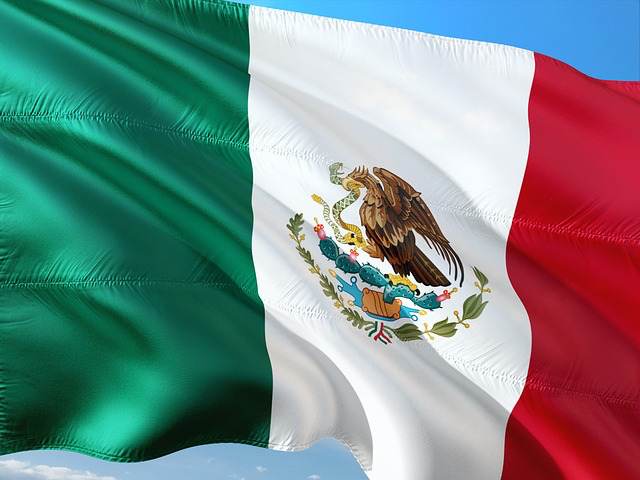Mexico planned to renew cat bond even before Otis triggered it

The Government of Mexico’s catastrophe bond, which is now set to be triggered after major hurricane Otis last week, was already planned for renewal in March 2024, and the fact another cat bond is set to payout to the benefit of Mexico will likely make this even more of a priority.
The Government of Mexico has been a particularly forward-thinking buyer of disaster insurance protection in numerous forms for a number of years now.
The country has a robust catastrophe insurance program in place and in the last year or two has been working on upgraded risk modelling capabilities, as well as projects to better organise data related to catastrophe events, while also implementing a parametric insurance scheme as well.
The World Bank facilitated catastrophe bond program has been a lynchpin of Mexico’s catastrophe insurance arrangements, with the country benefiting from a number of payouts over the years.
The Mexican government actually began its catastrophe bond journey way back in 2006, when its FONDEN disaster fund entity was the beneficiary of the $160 million CAT-Mex Ltd. parametric earthquake cat bond.
That CAT Mex cat bond was brought to market with the support of Swiss Re and ran clear with no losses. We also have a 2007 Swiss Re sponsored cat bond listed, Fusion 2007 Ltd., a part of which sourced capital markets backed retrocession for a reinsurance agreement between the Swiss reinsurer and Mexico’s FONDEN.
Then, in 2009, the Mexican government returned for the first time with the support of the World Bank, with a $290 million MultiCat Mexico 2009 Ltd. cat bond that provided FONDEN (Fund for Natural Disasters) with both earthquake and hurricane protection.
The 2009 cat bond also ran through its term without loss, after which Mexico came back for a renewal with the MultiCat Mexico Ltd. (Series 2012-1) cat bond issuance.
The MultiCat Mexico 2012 cat bond was where Mexico first benefited from a payout after the parametric trigger was activated by hurricane Patricia in 2015, causing a a 50% loss of principal to the $100 million Class C notes.
The $50 million payout came in 2016, after the final determination of the trigger variables.
The Mexican government returned in 2017, using the World Bank’s IBRD Capital-At-Risk notes program for the first time, with the $360 million IBRD / FONDEN 2017 cat bond deal.
Mexico benefitted from its second disaster insurance payout from a cat bond with the 2017 Fonden deal, as a 7th September 2017 magnitude 8.1 earthquake in the Chiapas region of Mexico breached the parametric trigger and caused a $150 million loss to investors and recovery for Mexico.
In 2018, Mexico then became the beneficiary of a $260 million IBRD CAR 118-119 cat bond which was issued as part of the Pacific Alliance deal. That deal ran clean without any payouts coming due.
Most recently, Mexico then came back to market through its FONDEN disaster fund for the $485 million IBRD / FONDEN 2020 catastrophe bond, which we now believe could deliver the government a $62.5 million payout after hurricane Otis slammed into the Acapulco region at Cat 5 strength last week.
If this most recent payout comes to pass, it means Mexico will have benefitted from $262.5 million in disaster insurance recoveries from insurance-linked securities (ILS) and capital market investors.
It shows how sophisticated Mexico is, when it comes to deciding on its coverage as well, as the payouts have all been for extreme events, just the kind you might expect a catastrophe bond to respond to.
There has been one key change as well, given Mexico’s Fund for Natural Disasters (El Fondo de Desastres Naturales), more commonly known as FONDEN, was dismantled.
However, the cat bond coverage continued with the direct beneficiary of the coverage becoming Mexico’s Treasury, as we reported.
With hurricane Otis triggering the current Fonden 2020 cat bond, which is due to mature in March 2024, it raises the question of what Mexico might do next.
We’ve learned that a renewal for the Mexican government’s catastrophe bond coverage had already been planned, with documents seen by Artemis that lay out its 2024 onwards economic plan featuring the cat bond and citing the desire to renew it.
That desire to renew the Mexican government’s catastrophe bond coverage is only likely to increase, now the utility of cat bonds is proven out again, with a payout due after a major natural disaster event.
Officials of Mexico’s Ministry of Finance last week acknowledged the “activation” of the catastrophe bond after hurricane Otis, so it is now awaiting the final determination of the payout amount, which is still expected to be 50% of the $125 million tranche of notes exposed to Pacific hurricanes.
The Undersecretary of the Treasury said he felt there is a “high probability” the cat bond is triggered and also mentioned Mexico’s parametric insurance as potentially paying out as well.
Mexico’s President this weekend urged insurers to make payouts after hurricane Otis swift, to help in the recovery and financing the reconstruction effort.
A swift, as is possible, payout from the catastrophe bond would provide another clear example of the benefits of adding the capital markets to sovereign disaster risk finance planning.
There is some concern in the country that the shuttering of the Fonden disaster fund has weakened Mexico’s financial resilience to disasters like Otis, with the amount of funding expected to be available now lessened, some have said.
But the catastrophe bond is at least one area of continuity in Mexico’s disaster financing, the importance of which is set to be highlighted again.
Mexico has provided an important example to others, as a committed sponsor of catastrophe bonds that has benefitted from their protection on a number of occasions and has remained consistent in securing renewal coverage each time they have expired as well.






